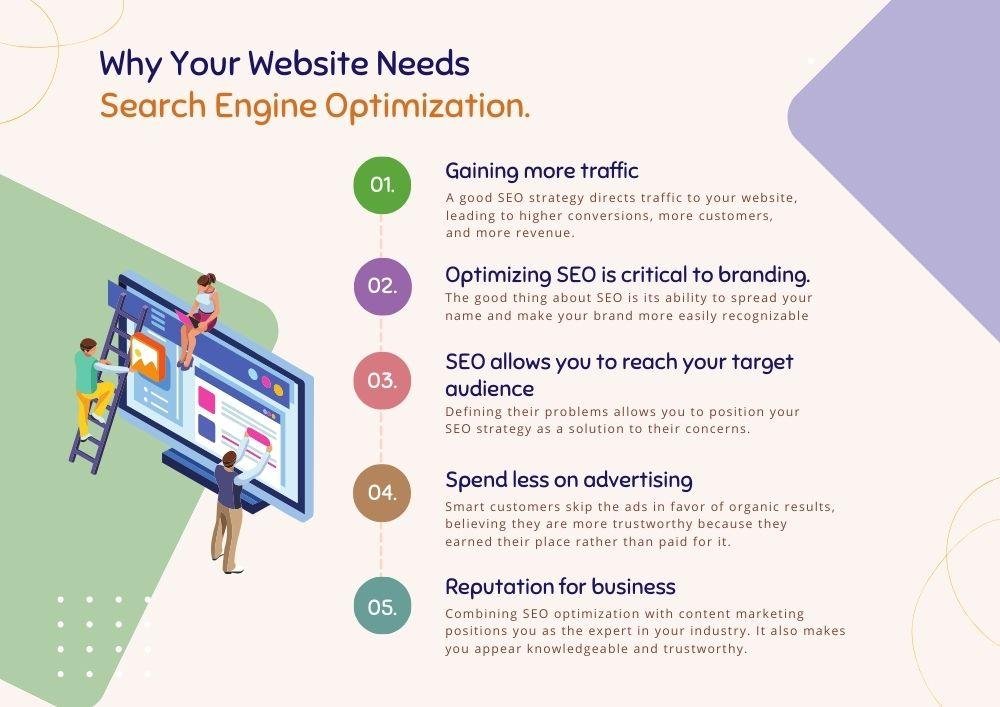Navigating the online world can feel like a whirlwind. But for businesses looking to thrive, a smart digital marketing plan is your North Star. It’s the roadmap that’ll help you cut through the noise and connect with your audience in meaningful ways..
It’s not just about having a presence online; it’s about creating a compelling and effective plan that aligns with your business goals and engages your target audience.
In this comprehensive guide, we’ll walk you through the steps of developing a winning digital marketing strategy that ensures you’re not just in the digital space but thriving in it.
Step 1: Define Your Objectives
Before diving into the tactics, it’s crucial to define your digital marketing objectives. What do you aim to achieve with your digital efforts? Common objectives include:
- Increasing brand awareness: If your brand is new or not well-known, your goal might be to reach a broader audience.
- Driving website traffic: Do you want to boost visitors to your website, potentially leading to more leads or sales?
- Lead generation: Are you focused on capturing potential customers’ contact information for future marketing efforts?
- Sales and revenue: Ultimately, most businesses want to convert leads into paying customers.
- Customer retention: Are you looking to engage with existing customers and build brand loyalty?
Each objective requires a tailored approach, so be clear about what you want to accomplish.
Step 2: Know Your Audience
Understanding your target audience is the cornerstone of a successful digital marketing strategy.
Develop detailed buyer personas that outline your ideal customers’
- demographics
- interests
- pain points
- online behaviors
This knowledge will guide your content creation and help you choose the right platforms to reach your audience effectively.

Step 3: Analyze Your Current Digital Presence
Before making any changes, assess your current digital presence. This includes your:
- website
- social media profiles
- email marketing efforts
- existing content.
What’s working well, and where are you falling short? Tools like Google Analytics and social media insights can provide valuable data to inform your strategy.
Step 4: Competitive Analysis
Study your competitors’ digital strategies.
- What platforms are they using?
- What type of content are they producing?
- How do they engage with their audience?
This analysis can reveal opportunities and gaps in the digital landscape that you can leverage.
Step 5: Select the Right Digital Channels
Your audience and objectives will influence your choice of digital channels. Consider the following:
- Website: Your website is often the central hub of your digital strategy. Ensure it’s user-friendly, mobile-responsive, and optimized for search engines (SEO).
- Social Media: Choose platforms where your audience is most active. Each platform has its unique strengths and demographics.
- Email Marketing: An effective way to nurture leads and engage with your audience. Segment your email list for targeted campaigns.
- Content Marketing: Create high-quality, relevant content that provides value to your audience. Blog posts, ebooks, videos, and infographics are all valuable formats.
- Paid Advertising: Platforms like Google Ads and social media advertising can be powerful tools when used strategically.

Step 6: Content Creation
Content is the backbone of your digital marketing strategy.
- Create a content calendar that outlines what content you’ll produce, when, and for which platforms.
- Your content should align with your audience’s interests, pain points, and the stage of the buyer’s journey they’re in.
Step 7: SEO Strategy
Ensure your website and content are optimized for search engines.
- Conduct keyword research to understand what terms your audience is searching for
- Use these keywords strategically in your content and meta tags.

Step 8: Social Media Strategy
Develop a social media strategy that outlines the:
- type of content you’ll share
- posting frequency
- engagement tactics.
Focus on building a genuine connection with your audience rather than just broadcasting messages.
Step 9: Email Marketing
Segment your email list to send personalized and relevant content. Automate email campaigns for lead nurturing and customer retention.
Step 10: Paid Advertising
If you’re using paid advertising, set clear goals, target your audience effectively, and monitor your campaigns closely. Regularly optimize your ads for better performance.
Step 11: Measurement and Analytics
Implement tracking tools like Google Analytics and social media insights to monitor your progress. Measure key performance indicators (KPIs) related to your objectives, such as:
- website traffic
- conversion rates
- click-through rates
- ROI

Step 12: Continuous Improvement
A winning digital marketing strategy is not static; it evolves. Regularly review your analytics and adjust your strategy based on what’s working and what’s not. Stay up-to-date with industry trends and technology advancements.
Step 13: Budget Allocation
Allocate your budget wisely across different digital channels based on your objectives and audience behavior. Be prepared to adjust your budget allocation as needed.
Step 14: Integration with Overall Marketing Strategy
Ensure your digital marketing strategy aligns seamlessly with your overall marketing strategy and business goals.
Consistency and cohesion across all marketing efforts are essential for success.

Step 15: Training and Skill Development
Invest in training for your team or yourself. The digital marketing landscape is ever-changing, and staying updated with the latest tools and trends is crucial.
Conclusion
Creating a winning digital marketing strategy requires careful planning, ongoing evaluation, and adaptation. Remember that every business is unique, and what works for one may not work for another. By following these steps and staying committed to delivering value to your audience, you can develop a digital marketing strategy